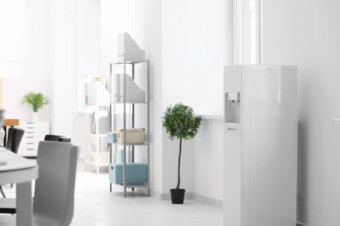
The easing of Covid restrictions and the return to the office for those furloughed or working from home is beginning. Employers have a big task in ensuring a safe environment for employees.
The success of the vaccine does not mean we can be relaxed about safety in the workplace: it is still possible to catch and carry the virus. As businesses prepare to reopen, it is crucial that safety measures are introduced, observed and properly enforced.
By law, employers have a ‘duty of care’ for employees, customers and anyone else who visits the workplace; you must:
- do all you reasonably can to protect the health, safety and wellbeing of people at work
- complete a risk assessment and take reasonable steps to prevent harm
- consult employees on any decisions that involve health and safety
Addressing risk
Most employees are likely to be ready to return to work at short notice, but we need to be flexible where possible. Take the time to explain to employees how you will make sure the workplace is safe and solicit input from them about any changes to the workplace that need to be made.
Assessing risk is part of the overall process used to control risks in your workplace. Identify hazards, consider potential risk so that you can nullify, mitigate or control them, keep comprehensive records and review arrangements regularly.
Talk to your workers and pay particular attention to the vulnerable and those with special needs; involve your employees as they are likely to be a source of useful suggestions. Where you identify risk factors then think ahead:
- Can you redesign the job or task?
- Can you adjust the materials, machinery or process?
- Organise work to reduce exposure to the materials, machinery or process that pose a risk;
- Identify and institute practical measures needed to work safely;
- Provide personal protective equipment and ensure workers use it properly.
Simple steps to improve safety
Ventilation is an important factor in reducing risk of transmission from Covid aerosols. While surface disinfection is helpful, we know Covid travels in the air so effective ventilation is a priority and measures to improve airflow indoors should be considered.
Social distancing, thorough cleaning regimes and, where appropriate, personal protective equipment are all still key control measures. Minimise the number of visitors to the workplace and consider one-way systems in busy areas. Also think about staggered start/finish times and shift patterns.
The Chartered Institute for Personnel and Development (CIPD) suggest there could be much greater freedom and flexibility in how, when and where people work in future. Employees generally want a mix of workplace and home working, and the possibility of more choice in their working routines, meaning hybrid working can provide an effective balance for many workers.
Practical protection
Employers are not expected to eliminate all risks, but do everything ‘reasonably practicable’ to protect people from harm. This means balancing the level of risk against the measures needed to control the real risk in terms of money, time or trouble.







